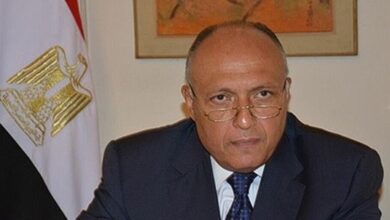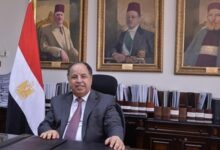Egyptian, int’l teams deduce maps of trade exchange between Ancient Egypt & world countries

Higher Education and Scientific Research Minister Ayman Ashour said that a team of National Research Center (NRC), in cooperation with an international research team, managed to deduce maps of trade exchange between Ancient Egypt and the world countries through ancient embalming materials.
The Egyptian team groups Mahmoud Mohamed Bahgat, Professor of Biochemistry and Head of the Department of Therapeutic Chemistry and General Supervisor of the Central Laboratories Network and Centers of Excellence at the NRC, as well as Mohamed Ibrahim Mohamed, Head of the Food Toxicology and Contaminants Department and Supervisor of the Chromatography Laboratory in the Central Laboratories Network.
The team also includes Ahmed Mahmoud Youssef, Head of the Packaging Materials Department at the NRC. While the international research team includes researchers from Germany, France, the United Kingdom and Italy.
In a statement on Friday, the higher education minister said that the researchers studied the tomb that was discovered a few meters away from the “Pyramid of Unas” that was built in the 5th Dynasty in Saqqara area. The embalming workshop includes a subterranean evisceration facility (the wabet), a multifunctional aboveground structure (probably corresponding to the ibu) and communal burial spaces.
The mummification workshop dates back to the 26th family and it is located 30 meters below the earth’s surface.
The workshop is divided into an embalming room, about 12 meters from the earth’s surface, canopic jars that were used by the Ancient Egyptians during the mummification process to store and preserve the viscera (internal organs) of the deceased for the afterlife. The construction of subterranean tombs designed in a way that involves a natural ventilation system.
The ideal mummification process took up to 70 days to complete, ensured the transformation of a vulnerable body into a durable mummy. The burial chamber is located 30 meters under the earth’s surface.
A silver mask was unearthed in good condition, which indicates that this family was rich due to the scarcity of silver in Ancient Egypt, in addition to 121 inscribed pottery vessels and faience (sintered-quartz ceramic material) cups were discovered.
The underground mummification workshop complex of the 26th Dynasty at Saqqara is the only one in which the utensils (tools) used in the mummification process were found intact, with hieroglyphs written on them.
According to the study, specific mixtures of fragrant or antiseptic oils, tars and resins that were used to embalm the head and treat the wrappings using gas chromatography – mass spectrometry analyses.
The study of the Saqqara workshop extends interpretations from a micro-level analysis highlighting the socio-economic status of a tomb owner to macro-level interpretations of the society.
The identification of non-local organic substances enables the reconstruction of trade networks that provided ancient Egyptian embalmers with the substances required for mummification.
This extensive demand for foreign products promoted trade both within the Mediterranean (for example, Pistacia and conifer by-products) and with tropical forest regions (for example, dammar and elemi).
SIS











